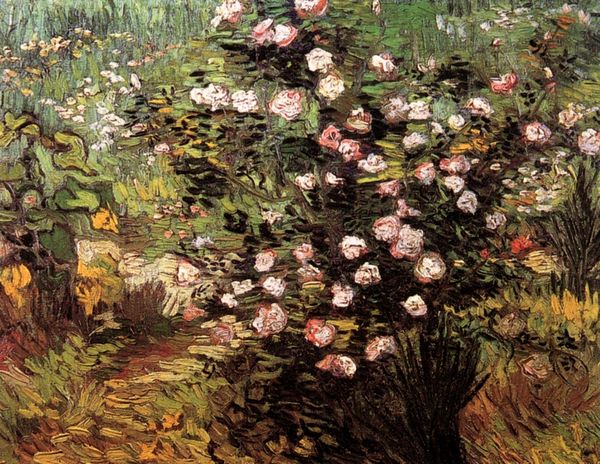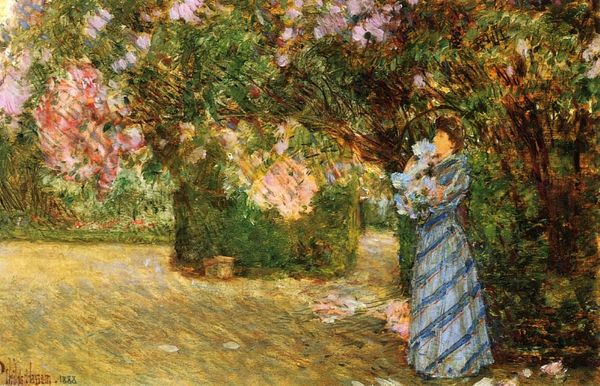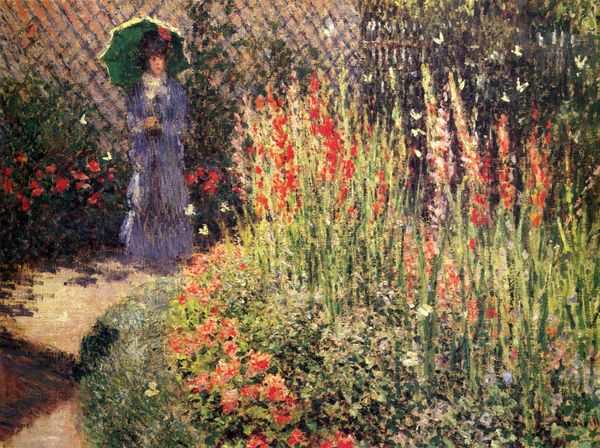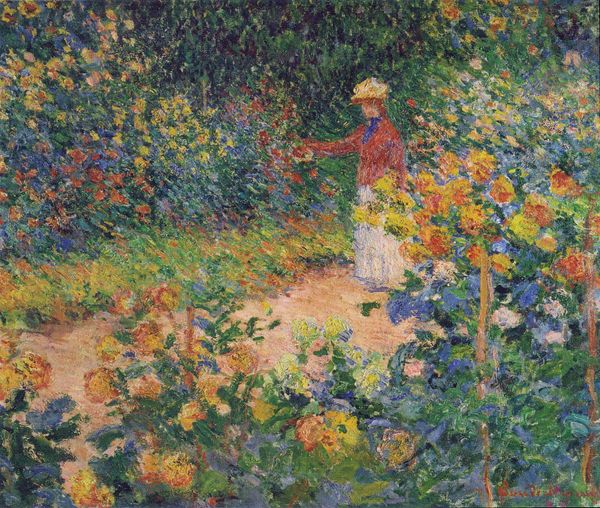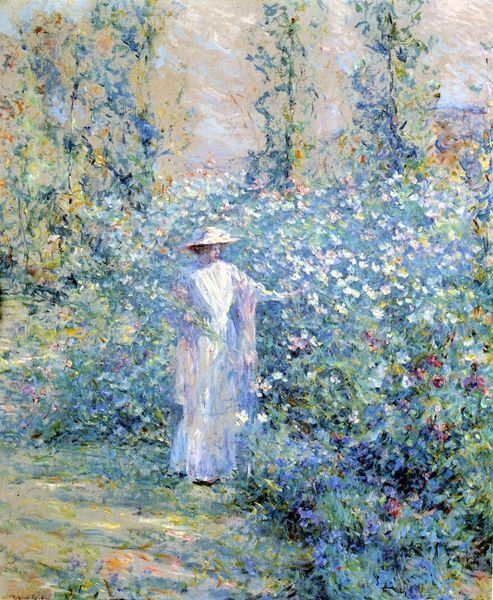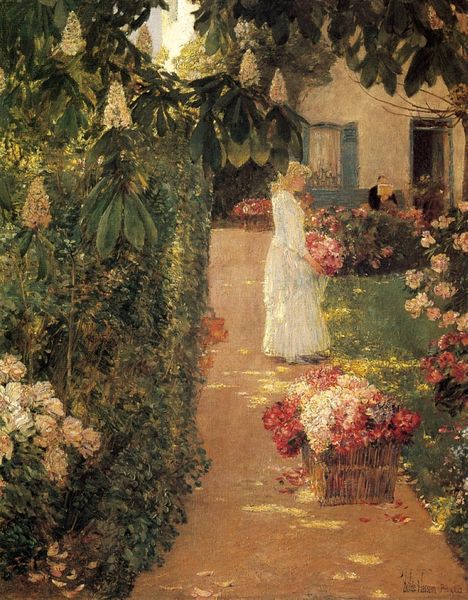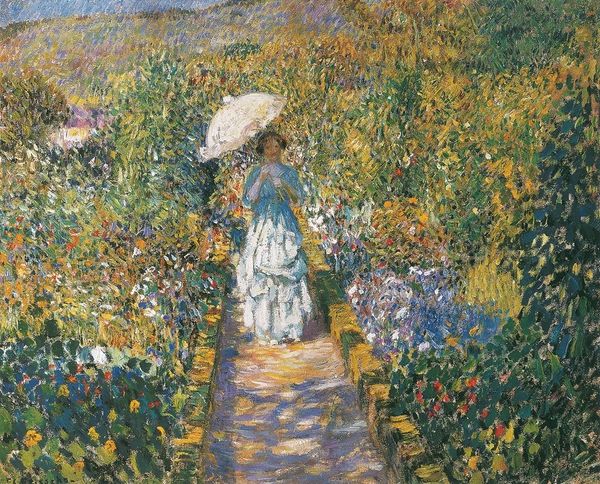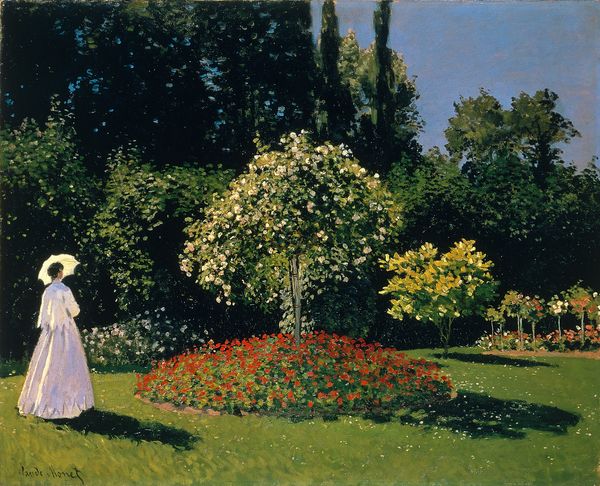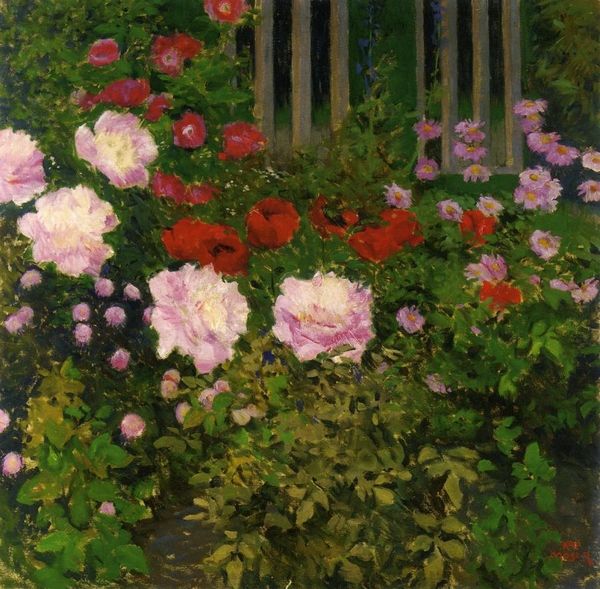
Dimensions: 89 x 116 cm
Copyright: Public domain
Curator: Gustave Caillebotte painted "Roses in the Garden at Petit Gennevilliers" in 1886. It's currently held in a private collection. Editor: My immediate sense is one of tranquil seclusion. The lushness, the gentle light... it evokes a very private moment of contemplation. Curator: Let's consider Caillebotte's artistic practice. He was from a wealthy family and used his inherited wealth to support other artists and purchase materials to develop new techniques, which afforded him the opportunity to work outside the formal gallery system. You see how that patronage shows in his material handling here, right? The sheer density of impasto builds the rose bushes. Editor: It speaks to class and leisure, doesn't it? Here is a woman with time to wander, perhaps accompanied by a servant represented by the dog, in a bountiful rose garden – and time for the artist to linger, too, considering the labor needed to produce the surface you’ve just mentioned. Her attire, that hat, the dog – it all signifies bourgeois respectability but the muted tones suggests more complex interiority. I wonder, too, about the politics of private gardens in 19th century France, their connection to colonial expansion, considering the roses themselves and global trade networks. Curator: Yes, definitely a focus on interiority here in terms of process. Consider how Caillebotte moves beyond traditional painting with that incredibly textured surface. The facture itself almost becomes the subject. The visible brushstrokes show process which democratizes and validates craft-making itself, no? Editor: Absolutely. But beyond that physicality, this piece quietly unsettles. The woman is presented from the rear, and her form disappears into the monochromatic tonality and background—allowing the artwork to speak as an examination of how women were not truly allowed to explore individuality due to their class roles during this historical era. It feels heavy in its social implications. Curator: The social conditions inform and provide context. But also Caillebotte’s social circumstances clearly had allowed him a certain creative latitude which informs what kind of material risks he could pursue in painting—not as traditionally refined in execution. Editor: Perhaps it's both privilege and constraint reflected in this contemplative garden scene, pushing us to reconsider the intersectionality of the artist and the sitter and to re-contextualize beauty within historical parameters. Curator: Ultimately, an engaging view that reveals so much when we slow down and consider it, both visually and intellectually, layer by textured layer.
Comments
No comments
Be the first to comment and join the conversation on the ultimate creative platform.

